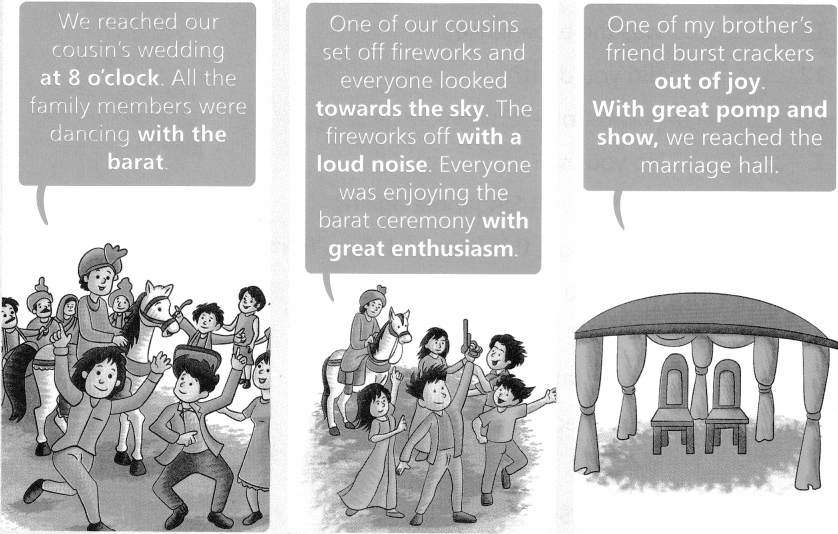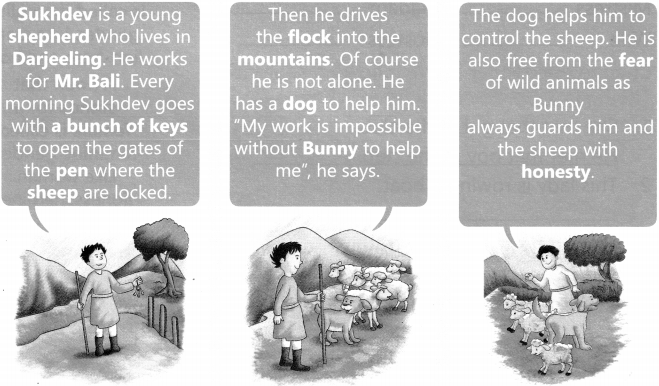Online Education for RS Aggarwal Class 8 Solutions Chapter 11 Compound Interest Ex 11C
These Solutions are part of Online Education RS Aggarwal Solutions Class 8. Here we have given RS Aggarwal Solutions Class 8 Chapter 11 Compound Interest Ex 11C.
Other Exercises
- RS Aggarwal Solutions Class 8 Chapter 11 Compound Interest Ex 11A
- RS Aggarwal Solutions Class 8 Chapter 11 Compound Interest Ex 11B
- RS Aggarwal Solutions Class 8 Chapter 11 Compound Interest Ex 11C
- RS Aggarwal Solutions Class 8 Chapter 11 Compound Interest Ex 11D
Question 1.
Solution:
Principal (P) = Rs. 8000
Rate (R) = 10% p.a. or 5% half yearly
Period (n) = 1 year or 2 half years

You can also Download NCERT Solutions for Class 8 Maths to help you to revise complete Syllabus and score more marks in your examinations.
Question 2.
Solution:
Principal (P) = Rs. 31250
Rate (R) = 8% p.a. or 4% half yearly
Period (n) = \(1\frac { 1 }{ 2 } \) years or 3 half years
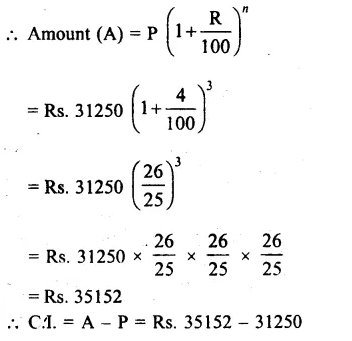
= Rs 3902
Question 3.
Solution:
Principal (P) = Rs 12800
Rate (R) = \(7\frac { 1 }{ 2 } \)% p.a. = \(\\ \frac { 15 }{ 2 } \)% half yearly
Period (n) = 1 year or 2 half years

Question 4.
Solution:
Principal (P) = Rs. 160000
Rate (R) = 10% p.a. or 5% half yearly
Period (n) = 2 years or 4 half years
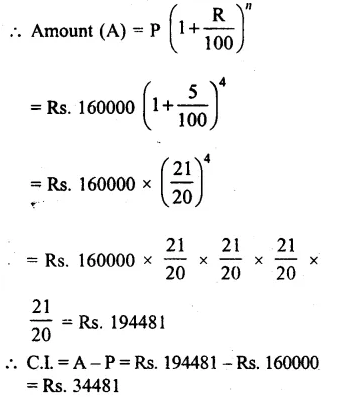
Question 5.
Solution:
Principal (P) = Rs. 40960
Rate (R) = \(12\frac { 1 }{ 2 } \) = \(\\ \frac { 25 }{ 2 } \)% p.a. or \(\\ \frac { 25 }{ 4 } \) % half yearly
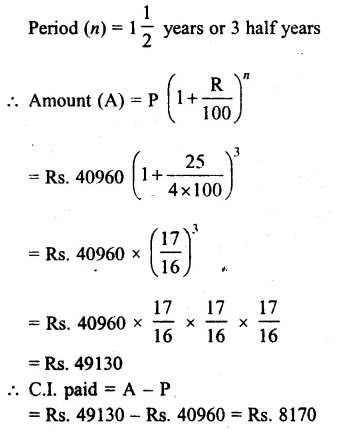
Question 6.
Solution:
Loan received for the cost of the house (P) = Rs. 125000
Rate of interest (R) = 12% p.a. or 6% half yearly

Question 7.
Solution:
Amount deposit in the bank = Rs. 20000
Rate of interest (R) = 6% p.a. or 3% half-yearly
Period (n) = 1 year or 2 half years
Amount received after 1 year
= \({ \left( 1+\frac { R }{ 100 } \right) }^{ n }\)
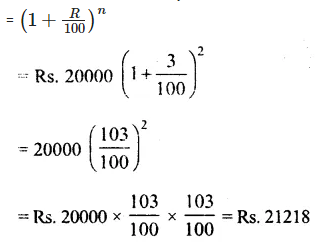
Question 8.
Solution:
Amount of loan = Rs. 65536
Rate of interest (R) = 12 \(12\frac { 1 }{ 2 } \) % = \(\\ \frac { 25 }{ 2 } \)%
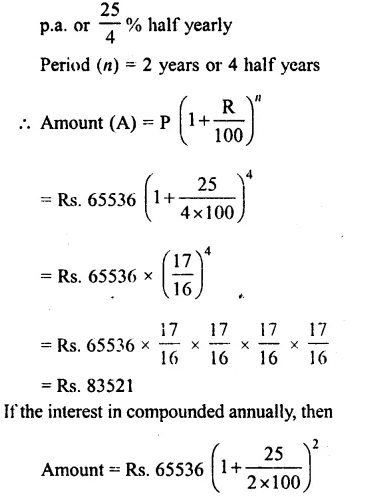
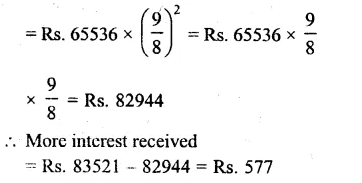
Question 9.
Solution:
Amount deposit in the bank (P)
= Rs. 32000
Rate of interest (R) = 5% p.a.
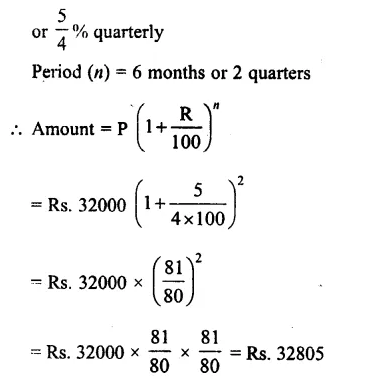
Question 10.
Solution:
Amount taken from finance company (P) = Rs. 390625
Rate of interest (R) = 16% p.a.

Hope given RS Aggarwal Solutions Class 8 Chapter 11 Compound Interest Ex 11C are helpful to complete your math homework.
If you have any doubts, please comment below. Learn Insta try to provide online math tutoring for you.
 In Online Education For sentences in the active voice, the subject performs the action; for those in the passive voice, the subject receives the action. Most grammarians recommend using the active voice whenever possible. Here are some examples to help you distinguish between the voices:
In Online Education For sentences in the active voice, the subject performs the action; for those in the passive voice, the subject receives the action. Most grammarians recommend using the active voice whenever possible. Here are some examples to help you distinguish between the voices:






